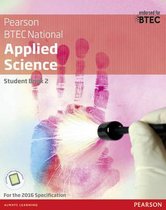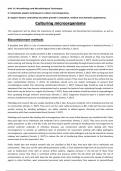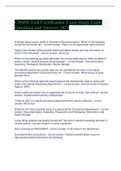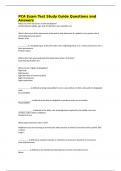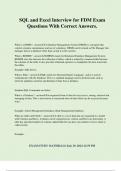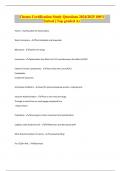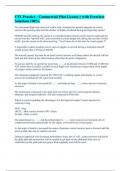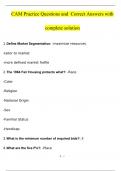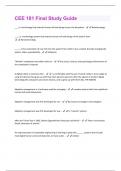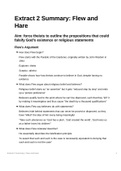C: Undertake aseptic techniques to culture microorganisms.
D: Explore factors controlling microbial growth in industrial, medical and domestic applications.
Culturing microorganisms
This assignment will be about the importance of aseptic techniques and biocontainment procedures, as well as
results from an investigation looking into microbial growth.
Biocontainment methods
A biosafety level (BSL) is a set of containment procedures used to isolate microorganisms in industries [Annets, F.
2017]. The lowest level is BSL-1 and the highest level is BSL-4 [Annets, F. 2017].
School laboratories are usually classified as BSL-1 laboratories, this is because they pose low risks to individuals and
communities [Annets, F. 2017]. In school laboratories, eating or drinking is not allowed as they may become
contaminated with microorganisms which may be accidentally consumed [Annets, F. 2017]. Hands must be washed
when entering and leaving the lab; this prevents the bacteria from spreading through physical contact with another
person and prevents bacteria from spreading to food that the individual may consume later on [Annets, F. 2017].
Personal protective equipment (PPE) such as disposable gloves, eye protective goggles and lab coats should be worn
to protect the clothes and face from coming into contact with the bacteria [Annets, F. 2017]. After carrying out work
with microorganisms, surfaces should be cleaned with disinfectant [Annets, F. 2017]. This ensures that bacteria does
not remain on the surface and potentially spread to another person if they touch the area of the surface that has
been contaminated [Annets, F. 2017]. All individuals should carry out aseptic techniques to prevent their
microbiological sample from becoming contaminated [Annets, F. 2017]. Disposal bags should be used to discard
equipment that may have become contaminated and to prevent the bacteria from replicating through nutrients in
food which may be found in a regular bin [Annets, F. 2017]. Doors and windows should be closed to stop pathogens
from spreading through airborne transmission [Annets, F. 2017]. Organisms should be kept in a locked room to
prevent unauthorised access to microbiological samples [Annets, F. 2017].
Pathology and research labs are usually classified as BSL-2 labs, they pose moderate risk to individuals and low risk
to communities [Annets, F. 2017]. They carry out the same safety procedures as BSL-1 labs but they also require
specific training for handling pathogens, use safety cabinets to defend against chemicals and take extreme
precautions with sharp contaminated items [Annets, F. 2017].
Pathology and research labs dealing with microorganisms that can cause lethal diseases are classified as BSL-3 labs,
they pose high risk to individuals and moderate risk to communities [Annets, F. 2017]. They carry out the same
safety procedures as BSL-1 and BSL-2 labs but they require specific training for handling these microorganisms to
prevent potential outbreaks of infectious diseases, use containment cabinets when dealing with these
microorganisms to provide an additional layer of protection for researchers working with highly pathogenic
microorganisms, wear protective clothing to minimise direct contact with pathogens and may be required to remove
makeup and jewellery [Annets, F. 2017] to reduce the risk of transferring these contaminants to the laboratory
environment or to the researcher's skin.
Public health labs and medical research labs are classified as BSL-4 labs, they pose high risk to individuals and
communities. They carry out the same safety procedures as BSLs 1-3 but implement high levels of security for access
such as double-door entry with an airlock, airflow systems, negative pressure in the lab (all of these three
procedures ensure that there is controlled airflow and pressure within the lab which will reduce the risk of
contamination on entry and exit), keep the lab separate from other buildings to prevent the spread of infectious
agents to other facilities, wear pressurised personnel suits protect researchers from exposure to aerosols/liquid
,Unit 17: Microbiology and Microbiological Techniques
C: Undertake aseptic techniques to culture microorganisms.
D: Explore factors controlling microbial growth in industrial, medical and domestic applications.
splashes/other forms of contamination, work in glove boxes inside sealed cabinets when manipulating cultures of
pathogens prevents dangerous agents from escaping, shower on entry and exit to prevent the spread of pathogens
outside the lab, decontaminate protective clothing to remove any trace of infectious agents and do not wear their
own clothes in the lab to minimise the risk of bringing external contaminants into the lab.
Personnel in industrial laboratories wear pressurised suits to avoid contamination from extremely contagious
pathogens, however schools do not require these suits [Annets, F. 2017]. Safety cabinets are used in industry to
protect staff from direct contact with diseases, a precaution that is not commonly done in schools [Annets, F. 2017].
Because of the usage of hazardous microorganisms, industries provide specialised training that is not required in
schools [Annets, F. 2017]. Industrial labs use airflow systems to keep contaminated air contained within the facility
to shield people from exposure, whereas schools that deal with lower-risk chemicals do not require such systems
[Annets, F. 2017].
Failure to adhere to biocontainment methods in laboratories has substantial risks which include concerns about
personal health and the safety of the public/environment. Not washing your hands can spread diseases among staff,
increasing cross-contamination. Consuming food in laboratories can expose people to harmful substances, posing
immediate health risks. Individuals without PPE (gloves, lab coat, protective eyewear) are at risk of direct contact
with dangerous chemicals. Inadequate staff training increases risks, resulting in accidents and inefficiencies. The
absence of safety cabinets raises the possibility of airborne transmission. Conforming to these biocontainment
methods is essential for protecting lab personnel and other people from hazards in the workplace.
Aseptic techniques
● Wash your hands with warm water and antiseptic soap before you start and dry them with a paper towel,
place this towel in the disposal bag provided [Annets, F. 2017]. This is important so that potentially harmful
microorganisms present on the skin can be removed, reducing the risk of transferring them to the samples
[Annets, F. 2017].
● Make sure benches have smooth surfaces to prevent bacteria from accumulating in crevices and make it
easier to clean [Annets, F. 2017].
● Cover any cuts or grazes with a clean waterproof dressing to prevent pathogens from entering the wound
[Annets, F. 2017].
● Always wear a clean disposable plastic apron; this protects your clothing and reduces the risk of
contamination of the microorganisms you are growing [Annets, F. 2017].
● Do not remove the lids when examining cultures to prevent pathogens in the air from entering the culture
and contaminating it [Annets, F. 2017].
● Sterilise glass instruments, such as spreaders, by dipping them in 70% methanol and then flaming them
lightly. Wire loops should also be sterilised by holding them in the hottest part of a blue Bunsen flame, until
they glow red hot [Annets, F. 2017]. Allow them to cool in the air, dip them in methanol and then quickly
flame the loops again to burn off the methanol [Annets, F. 2017]. Sterilising equipment helps to ensure that
they are free from microorganisms [Annets, F. 2017].
, Unit 17: Microbiology and Microbiological Techniques
C: Undertake aseptic techniques to culture microorganisms.
D: Explore factors controlling microbial growth in industrial, medical and domestic applications.
● Do not place bungs on any surfaces because they may transfer contaminants from the surface to the
container or culture when replaced [Annets, F. 2017]. Avoiding contact with surfaces helps to keep the
bungs sterile and reduces the chance of the culture becoming contaminated [Annets, F. 2017].
● Incubate the plates upside down to prevent condensation from the lid falling onto the agar surface, which
could contaminate it [Annets, F. 2017].
● Keep windows and doors closed to prevent airborne contamination [Annets, F. 2017].
● Always keep the methanol in a small beaker, well away from the Bunsen flame to reduce the risk of
accidents and fires [Annets, F. 2017].
● Do not incubate at temperatures greater than 20°C to prevent the growth of pathogenic contaminants
[Annets, F. 2017].
● Sterilise the neck of the culture tube to create a barrier against contamination when transferring materials
in and out of the tube, ensuring that only the desired microorganisms are cultivated within the culture
[Annets, F. 2017].
● Work near a lit Bunsen burner (hot flame) to create an updraft that helps prevent airborne bacteria from
falling onto the experimental plates [Annets, F. 2017].
● Do not eat or drink anything in the lab to prevent the transfer of microorganisms from the mouth to the
sample [Annets, F. 2017].
● Use two pieces of tape to seal the tube, do not seal it all the way around to allow for gas exchange while still
providing some level of closure to prevent contamination [Annets, F. 2017].
● Spray your bench area with disinfectant, leave it for 10-15 minutes and then wipe with a paper towel. Place
the paper towel in the disposal bag to eliminate surface contaminants [Annets, F. 2017].
Growth requirements for microorganisms
Nutrients
All microorganisms require specific nutrients [Annets, F. 2017]. They all require a carbon source, as carbon is found
in all organic compounds [Annets, F. 2017]. Bacteria and fungi that are not photosynthetic require organic carbon
sources such as glucose, starch, lipids or proteins [Annets, F. 2017]. Microorganisms also require nitrogen in the form
of a protein to produce amino acids and nucleic acids [Annets, F. 2017]. They require sulphur and phosphorus in the
forms of sulphates and phosphates [Annets, F. 2017].
Water
All living cells require water, which allows low molecular mass nutrients to pass through cell membranes [Annets, F.
2017]. Water makes up a major portion of the cytoplasm of living cells [Annets, F. 2017].
Light and temperature
Some bacteria and protists are photosynthetic, which means they rely on light for energy and are able to obtain
carbon from inorganic carbon dioxide [Annets, F. 2017]. Most fungi and bacteria rely on organic molecules for food
and energy and therefore do not require light [Annets, F. 2017]. Most bacteria and fungi are mesophiles, which grow

